Wayne Jaeschke, from West Chester, Pennsylvania, noticed the formations which can be seen rising up from the edge of the Martian disk after he took the pictures on March 20.
Some observers have suggested the so-called clouds are at least 150 miles away from the surface while others have suggested it could be debris which was disturbed after the Red Planet was hit by a meteor.
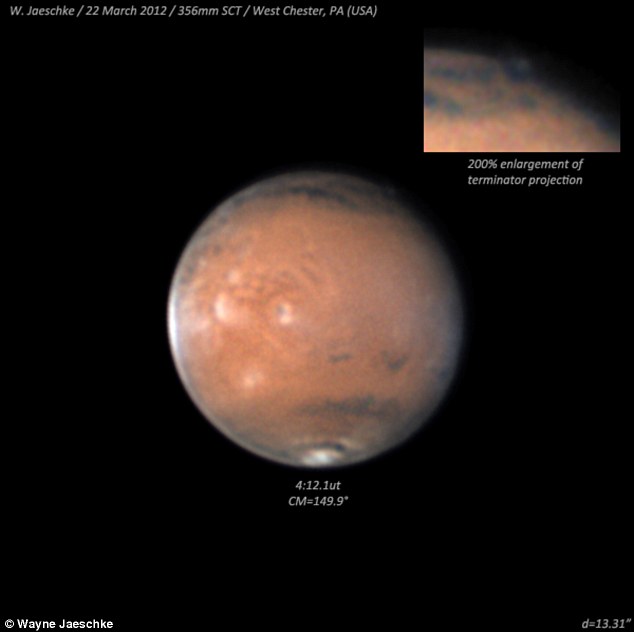
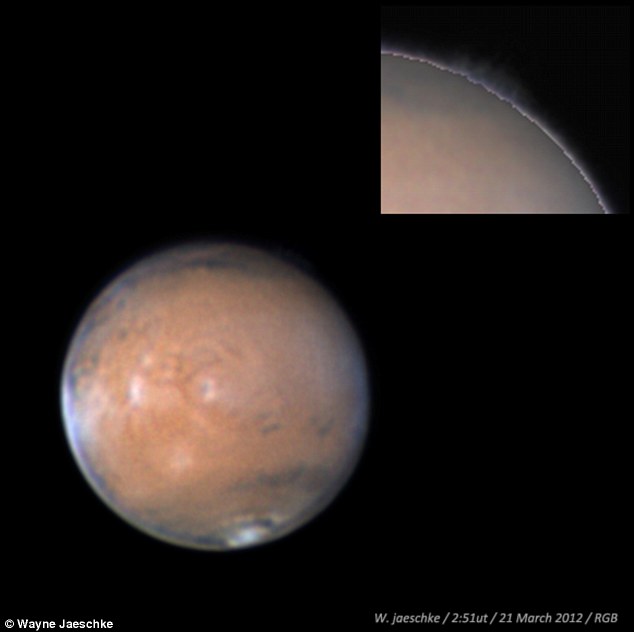
Social networking sites have been buzzing with the latest find which has prompted astronomers to investigate further and before they disappear.
'It's not completely unexpected. But it's bigger than we would expect, and it's definitely something that our atmosphere guys want to take a look at,' said Jonathon Hill, a member of the Mars Space Flight Facility at Arizona State University, to Cosmic Log.
A Thermal Emission Imaging System (Themis) on Nasa's Mars Odyssey orbiter will be used to look at the area where the cloud was spotted.
Mr Hill said the Themis camera is capable of getting simultaneous visible and thermal infrared images which would capture the cloud structures and their temperature.
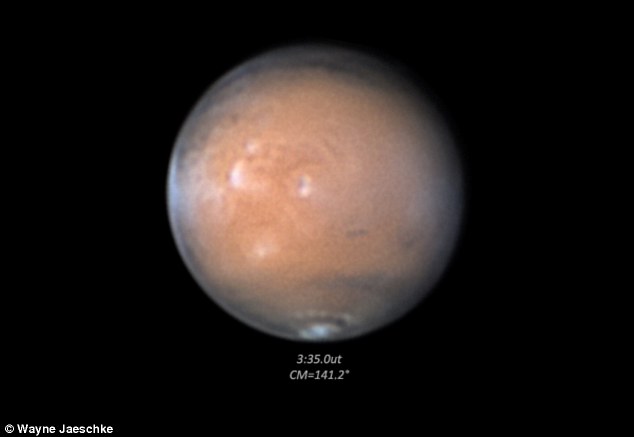
Mr Jaeschke, who has a private observatory, said it looked as though the formation had reduced in size but added that it was important to act quickly and investigate the phenomenon.
The feature can be viewed from the Americas and should show up show up on the edge of Mars's disk around 1:10 a.m. ET Saturday, and 39 minutes later each succeeding night.
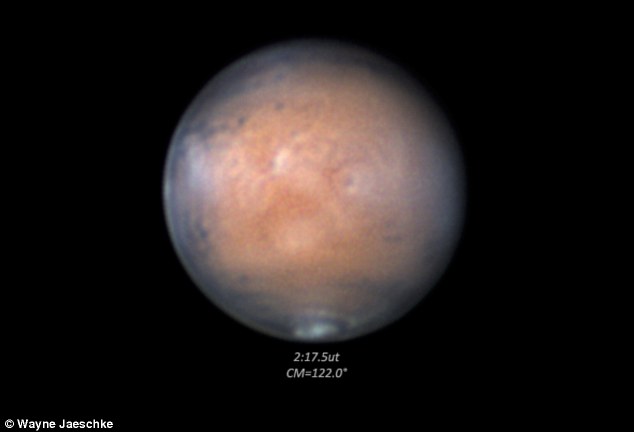
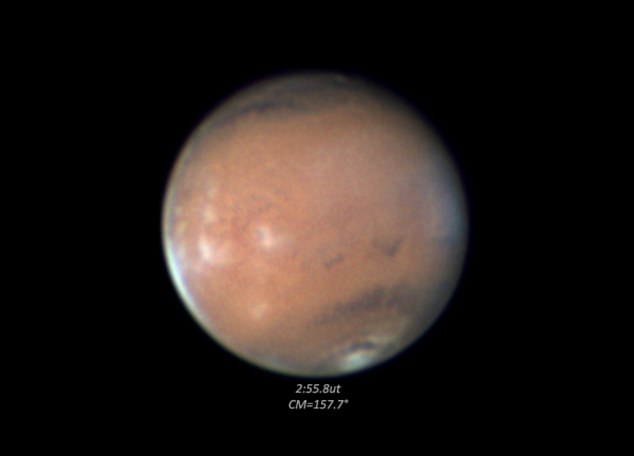
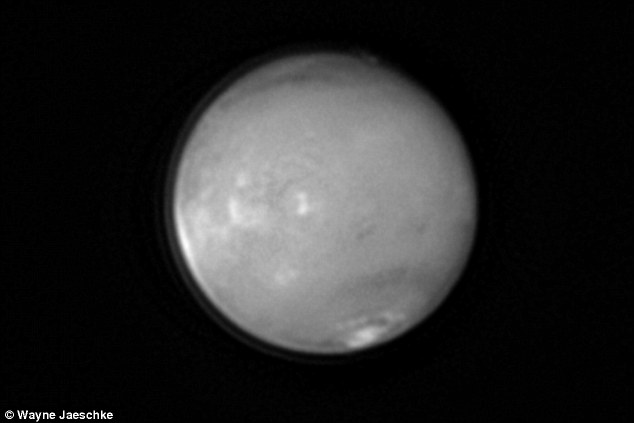



But if that really is cloud formation or the result of a meteor impact, then it's BIG news!